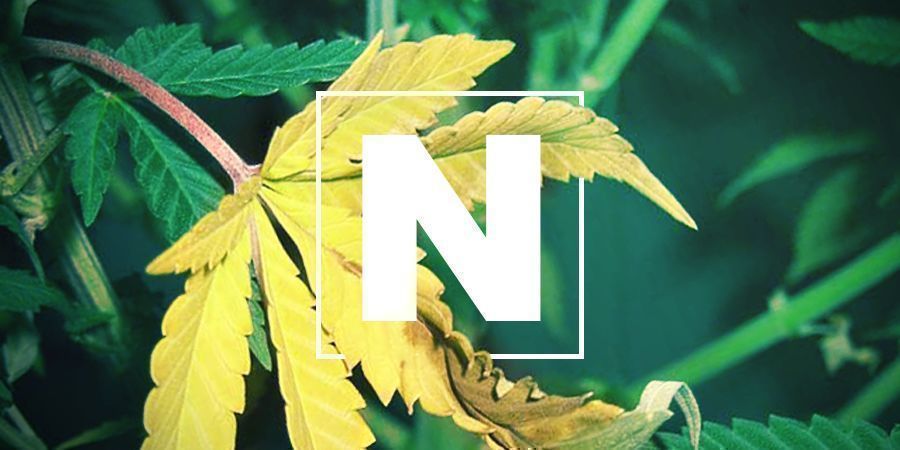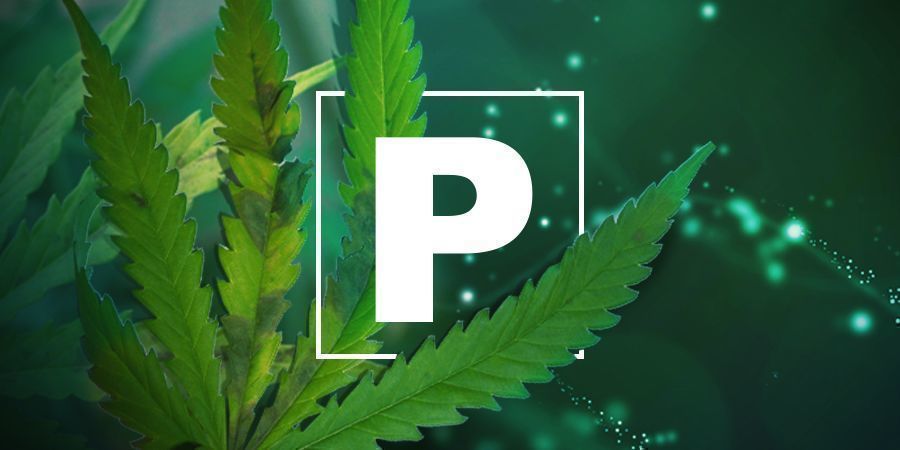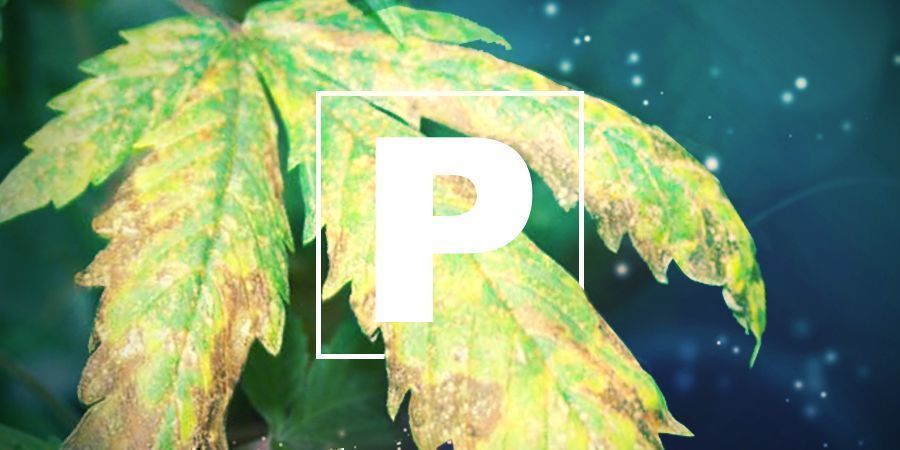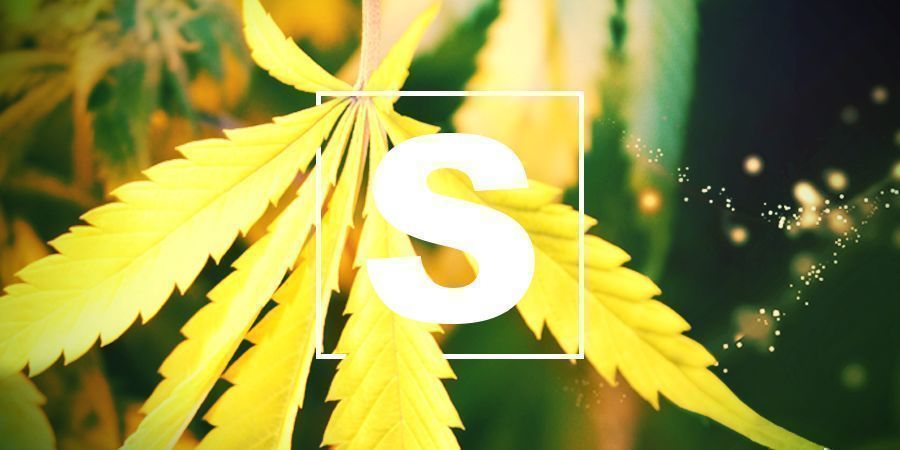Macro And Micronutrient Deficiencies Explained
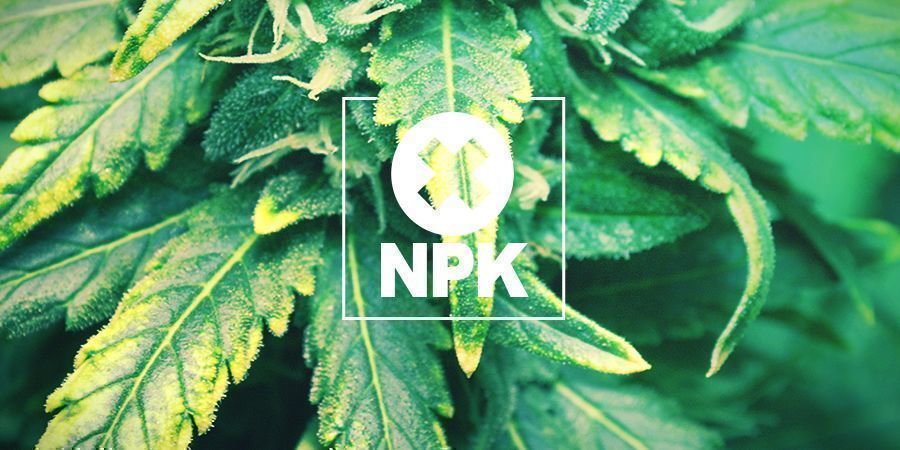
Every grower needs to know about macro and micronutrient deficiencies. Ignorance could literally kill your cannabis plants. There are no emergency rescue cannabis services to call on if things go wrong. When your marijuana needs Dr. Greenthumb, you can’t afford to play the role dumb. This is your nutrient deficiency cheat sheet.
CALCIUM DEFICIENCY
WHAT IS CALCIUM DEFICIENCY?
Calcium deficiency is a relatively common micronutrient deficiency for cannabis cultivators to encounter from time to time. Coco and hydro growers are more likely to have problems with this particular secondary nutrient as the growing medium is inert. Soil growers are by no means immune since different cannabis strains have higher demands for calcium than others and can quickly devour the reserves in the dirt.
SYMPTOMS OF CALCIUM DEFICIENCY
Calcium is an immobile nutrient, yet a deficiency can still manage to spread relatively quickly throughout the plant. This is because cannabis plants use calcium to facilitate a variety of metabolic and decomposition processes. Sluggish growth, weak stems, and mottled brown spots appearing on new leaves that turn yellow are sure signs of calcium deficiency. Soon, middle and lower leaves will show signs of brown spotting if you don’t act fast. Worse, roots will deteriorate and become vulnerable to root rot.
CAUSES OF CALCIUM DEFICIENCY
If the growing medium is too acidic with a pH below 6.0, your plants will experience micronutrient lockout. However, if you have a handle on pH, it’s far more likely that the base nutrients you are feeding plants are lacking in calcium and perhaps magnesium and iron too. You can’t rely on tap water to contain the correct trace calcium quantities across the whole of Europe. Filtered or bottled water will have the same calcium deficits.
CURES FOR CALCIUM DEFICIENCY
Supplementation with Cal/Mag is the simple solution. Excepting some of the premium base nute brands, most fertiliser ranges need to be supplemented with specific micronutrient additives. Even if you have rich soil, many strains have a real hunger for calcium and magnesium during flowering, so some supplementation may still be required.
IRON DEFICIENCY

WHAT IS IRON DEFICIENCY?
Iron deficiency is a secondary nutrient deficiency that is a constant threat for coco growers. It can also be problematic for hydro and soil growers too. Iron is essential to photosynthesis as cannabis plants use iron to produce chlorophyll and to metabolise sugars.
SYMPTOMS OF IRON DEFICIENCY
Chlorosis in the form of bright yellow top leaves is the signature indicator of iron deficiency. Strangely, the leaves seem to turn yellow from the base, rather than starting at the tips. This oddity should help you to eliminate other nutrient deficiencies as the culprit. Iron is immobile, so plants will lose vigour and leaf drop will begin from the top-down.
CAUSES OF IRON DEFICIENCY
Coco coir is a fantastic growing medium, but micronutrient deficiencies regularly cause headaches for coco growers. You probably already know that you can supplement with specific Cal/Mag products, but everyone forgets about iron. Soil and hydro growers can run into iron deficiency problems too if pH levels stray outside of optimal parameters.
CURES FOR IRON DEFICIENCY
Coco growers are advised to invest in premium, coco-specific nutrient lines to avoid lockouts and overfertilisation. Many hydro and soil formulations simply don’t work when applied to cannabis plants growing in coco. Dialling in the perfect pH every watering is recommended, regardless of what substrate you prefer. Moreover, this is often the solution to iron deficiency caused by lockout. Coco/hydro growers need to dial in 5.5-6.5pH, while soil growers must aim for 6.0-7.0pH.
COPPER DEFICIENCY

WHAT IS COPPER DEFICIENCY?
Copper deficiency is a rare mineral deficiency that can be easily corrected. That’s provided you detect it and react fast. Copper deficiency is so uncommon that many growers have no idea what is blighting their cannabis plants.
SYMPTOMS OF COPPER DEFICIENCY
In the beginning, top leaves will look overfertilised with yellow fringes. Rapidly, green tops will turn an odd metallic bluish tone or may look bleached. Not the typical chlorosis associated with other nutrient deficiencies. As an immobile micronutrient, the trouble always starts from the top-down. If it strikes during the bloom cycle, flowers will not form densely.
CAUSES OF COPPER DEFICIENCY
Overwatering and/or imbalanced pH are the two known causes of this uncommon deficiency. Copper is needed in trace amounts, but is an essential element nonetheless. Without copper, cannabis plants cannot synthesise plastocyanin, which is a blue-coloured protein required for photosynthesis. Lockout can occur with a fluctuating pH level, while excessive watering leaches the medium of trace elements.
CURES FOR COPPER DEFICIENCY
Finally, we get to lay a quick fix on you. Simply dial in your pH levels to the optimal ranges for your chosen growing medium (Soil: 6.0-7.0pH, Coco and Hydro: 5.5-6.5pH). Water plants only as required. Maintain an effective wet-dry cycle. There is absolutely no need to specifically supplement cannabis plants with copper. We are not sure such a product even exists. Affected leaves will need to be removed, as they will not recover.
MANGANESE DEFICIENCY
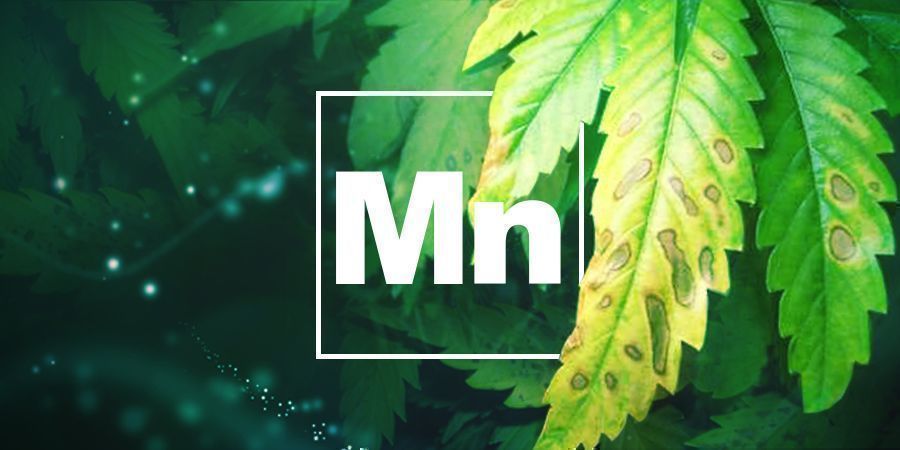
WHAT IS MANGANESE DEFICIENCY?
Manganese is a mineral required in trace amounts by cannabis plants. Chlorophyll and protein production, as well as the breakdown of enzymes, will be inhibited without manganese. The process of photosynthesis will, in turn, be negatively affected.
SYMPTOMS OF MANGANESE DEFICIENCY
Manganese is immobile, so the youngest leaves will be affected first. New growth will be sluggish. Fresh sets of leaves will yellow and develop brown spots while the veins remain green. Be sure of what you’re dealing with by examining older leaves to compare and contrast. This will help avoid misdiagnosis.
CAUSES OF MANGANESE DEFICIENCY
Nutrient lockout is the number 1 cause of manganese deficiency. Regardless of what substrate you are using, manganese can only become available to the root zone within the relatively narrow band of 6.0-6.5pH. Tap water contains trace levels, so there is no need to supplement with extra bottles of fertilisers.
CURES FOR MANGANESE DEFICIENCY
Bringing the pH of your water to the optimal 6.0-6.5pH range should solve this problem pretty rapidly. Some upper leaves will need to be pruned from plants and recovery time should be no more than a few days before plants bounce back.
MOLYBDENUM DEFICIENCY

WHAT IS MOLYBDENUM DEFICIENCY?
Similar to the rest of the essential trace minerals, molybdenum is only required in minute quantities. Molybdenum helps marijuana to metabolise nitrogen. Without it, cannabis plants simply cannot grow strong and healthy.
SYMPTOMS OF MOLYBDENUM DEFICIENCY
Sudden, strange leaf discolouration midway up the plant is the beginning of a molybdenum deficiency. Leaves will turn yellow and/or almost pale white and begin to curl inwards. Rapidly, newer growth will yellow and discolour. If left untreated, leaves will eventually turn a scorched, rusty shade.
CAUSES OF MOLYBDENUM DEFICIENCY
Again, nutrient lockout is the scourge of the cannabis grower. Outside of the 6.0-6.5pH range, roots will not be able to absorb molybdenum, even if it is present in abundance. This particular trace element deficiency is very rare, but usually leads to disaster. Molybdenum deficiency is often misdiagnosed when it does happen to strike. Unlike manganese, this trace mineral is highly mobile and the deficiency can spread throughout the whole plant in no time.
CURES FOR MOLYBDENUM DEFICIENCY
Keeping pH levels of nutrient solution dialled in and using tap water should help you to avoid this deficiency. However, mistaking molybdenum deficiency for a nitrogen deficiency is one of the most frequent grower errors. Furthermore, it has also been linked to phosphorus deficiencies. Tight control of pH levels and using cannabis-specific nutrients are the only preventative solutions. Necrotic foliage will have to be pruned and growth will be stunted. How significantly depends on how fast you react. Molybdenum deficiency is messy to correct.
NITROGEN DEFICIENCY
WHAT IS NITROGEN DEFICIENCY?
Nitrogen is the “N” of the big three macronutrients. The trio is listed as N-P-K on your base nutrients. Cannabis plants require nitrogen throughout their lifecycle. But it’s during vegetative growth that nitrogen is of the greatest importance. Nitrogen is the key to maintaining lush green foliage and healthy shoot development. Left untreated, nitrogen deficiency can be fatal.
SYMPTOMS OF NITROGEN DEFICIENCY
As a mobile macronutrient, nitrogen moves to where it is needed most. When the lowest leaves of cannabis plants begin to yellow, droop, and drop off while new leaves continue to grow green, it’s a nitrogen problem. Essentially, the plant is draining nitrogen reserves from the older leaves. Bottom-up chlorosis can spread fast, so you need to respond immediately.
CAUSES OF NITROGEN DEFICIENCY
One way or another, the culprit is the grower. Nitrogen deficiency is a self-inflicted malady caused by incorrect dosing of base nutrients, imbalanced pH, or unsuitable fertilisers and substrates.
CURES FOR NITROGEN DEFICIENCY
First, keep pH levels in check for your particular substrate. Coco and Hydro growers need to maintain 5.5-6.5pH, while soil growers must maintain 6.0-7.0pH. Alternatively, invest in a self-adjusting cannabis fertiliser range. Don’t buy your medium from the garden centre as the pH is unsuited to cannabis cultivation. Haphazardly devising your own cocktail of macro and micronutrient doses is a really bad idea too. Always read the label of your nutrients and stick to the recommended doses.
PHOSPHORUS DEFICIENCY
WHAT IS PHOSPHORUS DEFICIENCY?
Phosphorus is the “P” of the macronutrient big three. Most growers already know P is essential during bloom to encourage flower formation. However, a phosphorus deficiency will also inhibit cell division and root development, stunting both lateral and vertical growth. Phosphorus is required throughout the cannabis lifecycle. A phosphorus deficiency can seriously reduce harvest weight. In the worst case scenario, it can indirectly be fatal. Weak, unhealthy plants are far more vulnerable to plagues and pathogens.
SYMPTOMS OF PHOSPHORUS DEFICIENCY
Phosphorus is another highly mobile macronutrient. Plants will first deplete reserves stored in the lower, older leaves. Leaves and stems tend to turn peculiar colours, and this is not to be confused with genetic or climatic-induced colour formations. For starters, lower leaves will turn a very dark green or even a slightly blue shade with irregular brown/purple blotches. Stems may even turn red/purple too. Overall plant health and growing vigour will deteriorate. Left untreated, it will spread up throughout the plant's foliage. Moreover, if the deficiency becomes a problem during bloom, flowers will not form densely. Not a pretty sight, but an easy deficiency to ID.
CAUSES OF PHOSPHORUS DEFICIENCY
Overwatering, low grow-op temperatures, incorrect N-P-K ratios, and imbalanced pH alone or in combination can lead to phosphorus deficiency. Unfortunately, all of the above are grower errors. If you’re running into a P deficiency during vegetative growth, odds are you are overwatering, or the pH is straying outside the optimal 5.5-6.5pH for coco/hydro and 6.0-7.0pH for soil.
When making the transition to flowering, it’s critical to gradually taper off N while simultaneously increasing both P and K. Most phosphorus deficiencies during the bloom cycle are the result of grower’s misadventures with booster products and not dialling in nutrient solutions properly. Sharp drops in temperature can also shock plants and lead to a lockout at any stage of the cannabis lifecycle.
CURES FOR PHOSPHORUS DEFICIENCY
By simply taking care of business in the cannabis garden with a consistently methodical approach, you can avoid most nutrient deficiencies. Should you encounter a phosphorus deficiency, the solution must be customised to the plant's lifecycle stage. You should be able to spot the symptoms quickly and correct your watering and nutrients accordingly. Dial in your feed with cannabis-specific base nutrients for vegetative growth or flowering as necessary. Trim away the dead and dying leaves, observe post watering plant behaviour, and move on.
POTASSIUM DEFICIENCY
WHAT IS POTASSIUM DEFICIENCY?
Potassium deficiency is hazardous to your marijuana harvest. One of the leading causes of low yield is a lack of potassium, or rather, available potassium. This macronutrient deficiency can wreak havoc on plants’ metabolic functions and may also reduce terpene production. Younger plants with a potassium deficiency will have a weak, unhealthy root zone and will likely struggle through their life cycle.
HOW TO IDENTIFY POTASSIUM DEFICIENCY
Yellow/browning leaves that begin to discolour at the fringes are the first visual symptom most cannabis plants exhibit. As a mobile element, K (potassium) deficiencies begin in the lower, oldest leaves. The plant directs available potassium to the younger leaves. This looks a lot like light burn, so make sure to inspect plant leaves from the bottom up.
THE CURE FOR POTASSIUM DEFICIENCY
High-quality cannabis-specific soils are usually pretty rich in potassium. Similarly, brand name base nutrients have been formulated with precise N-P-K ratios for both vegetative and bloom phases of the cannabis life cycle. When deficiencies are experienced under these conditions, odds are, the crops are afflicted by nutrient lockout. Potassium can only be absorbed within the 6.0-7.0 pH range in soil. Coco and hydro growers must maintain a lower 5.5-6.5 pH level. The good news is that a flush with pure, pH-balanced water can put your plants back on track. Subsequent nutrient solution feeds must also be dialled in to prevent recurrence.
PREVENTATIVE MEASURES
If you are a cultivating using hydroponic substrates that are mostly inert, in which case unfertilised plant roots are dependent solely on the grower, overwatering can potentially flush-out potassium. So do take care to maintain an efficient wet-dry cycle to avoid this.
SULPHUR DEFICIENCY
WHAT IS IT SULPHUR DEFICIENCY?
A sulphur deficiency stunts plant growth during the vegetative stage and is a bud killer if left untreated during flowering. This micronutrient deficiency is something of a rarity, but it can be a real headache for unlucky, inexperienced growers. Cannabis plants need sulphur for chlorophyll production and to develop a strong, resistant root zone. The vital life-sustaining processes of photosynthesis and transpiration cannot continue without it.
HOW TO IDENTIFY SULPHUR DEFICIENCY
As sulphur deficiencies are so uncommon, they are often mistakenly diagnosed as a nitrogen deficiency. In contrast to an N deficiency, which begins with the bottom, oldest leaves turning yellow, sulphur is immobile and the deficiency will present with the youngest leaves yellowing close to the plant top. Young plants will be stunted and leaves will become smaller and fragile. Pinkish blotches may become visible on the underside of leaves. If left untreated, they turn brown or rust-coloured and drop off. During bloom, a sulphur deficiency can be horrific to witness. Bud production ceases. New growth withers and dies. Yellow-brown tops and few flowers create a pitiful sight in the grow-op. Pretty much every grower’s worst nightmare.
THE CURE FOR SULPHUR DEFICIENCY
Fortunately, there is a quick fix for a sulphur deficiency provided you accurately diagnose and act fast. As usual, start with a pH-adjusted flush of pure water and follow up with cannabis-specific nutrients. Sulphur is absorbed more easily by the roots between the 5.5-6.5 pH range. High pH is the primary cause of most sulphur deficiencies. If you misdiagnose or are dealing with the problem during bloom, then it’s a salvage operation. Dead and dying plant material must be removed in addition to correcting the pH.
PREVENTATIVE MEASURES
Hydroponic and coco growers must pay close attention to pH levels of nutrient solutions and monitor plants’ behaviour post-feeding. Soil is a little more forgiving of a higher pH and acts like a buffer for the root zone. Although a sulphur deficiency can affect soil-cultivated cannabis crops, it’s far less likely - especially when using cannabis-specific substrates, fertilisers, and supplements.
ZINC DEFICIENCY
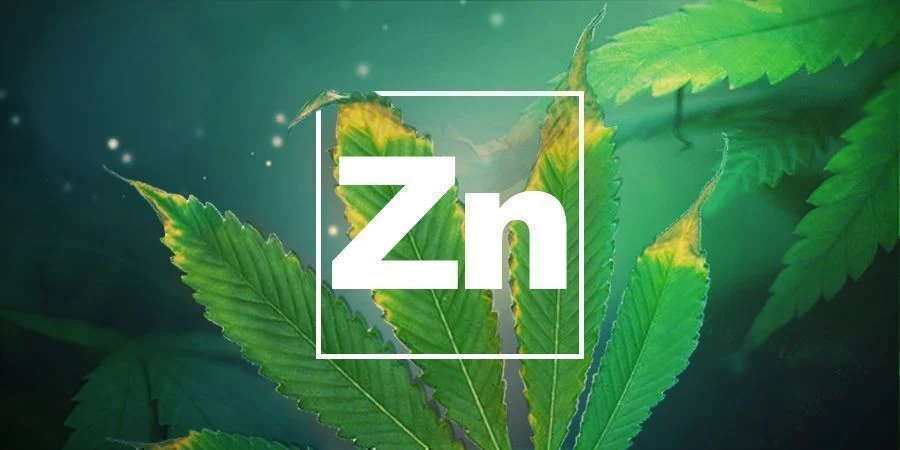
WHAT IS ZINC DEFICIENCY?
Zinc is another micronutrient that cannabis plants only require in trace amounts. However, zinc deficiency can slow plant growth during the vegetative cycle and prevent buds from forming dense clusters during flowering. Yields will be reduced, and what buds do develop will be airy and loose. Cannabis requires zinc to activate enzymes and produce chlorophyll.
HOW TO IDENTIFY ZINC DEFICIENCY
Zinc is immobile and will cause the youngest leaves to turn yellow between veins and make the tips appear burnt. New shoots will be stunted and internodal spacing will be compacted, causing leaves to bunch up in pairs. Over time, if left untreated, the plant will stop growing and yellow from the top down. Fluffy flowers instead of dense clusters develop. Again, as this is somewhat of a rare deficiency, it is often mistaken for light burn.
THE CURE FOR ZINC DEFICIENCY
No wonder-elixir needed here. Plain tap water should do the trick. Most clean, drinkable tap water contains all the zinc your cannabis plants require. Zinc is available to roots so long as the medium does not become alkaline. Tap water pH of 5.5-6.5 is just right. Flush plants with pure water and then resume regular feeding. Some unhealthy shoot tips and dying leaves will probably need to be pruned, depending on how fast you catch the zinc deficiency.
PREVENTATIVE MEASURES
The only way to be sure you don’t mistake zinc deficiency for light burn is to monitor temperatures, relative humidity, and light distance from the canopy. You also need to make sure the pH of your nutrient solution is not too high. Secondary nutrients are unavailable to the roots even if they are present when the substrate is alkaline.
BORON DEFICIENCY

WHAT IS BORON DEFICIENCY?
Boron deficiency often blights cannabis grown in drought conditions. Dry, arid weather or environmental conditions and infrequent watering can trigger a boron deficiency. On the flip side, seedlings or recently transplanted sprouts growing in a soggy, overwatered medium can suffer from a boron deficiency too. Cannabis plants need boron in trace amounts to transport sugars, and most importantly, to use calcium, potassium, and nitrogen. If left untreated, further macro and micronutrient deficiencies may result.
HOW TO IDENTIFY BORON DEFICIENCY
Brown spots on yellow leaves and sluggish, abnormal new growth on mature cannabis plants are the warning signs of boron deficiency. Floppy stems and twisted leaves will often be the first signs that young plants are afflicted.
THE CURE FOR BORON DEFICIENCY
Some well-known cannabis-specific nutrients now include boron supplements; most are for application on seedlings and transplants. However, if it has taken you some time to identify a boron deficiency, a light solution of these products could get your grow back on track.
PREVENTATIVE MEASURES
Boron deficiency can be easily avoided. It can be as simple as using tap water, which contains all cannabis plants need. Watering plants as required and not saturating the substrate with seedlings are basic good-growing practices. Boron deficiency is pretty rare, so if you can dial in the right pH and avoid errors such as forgetting to water plants or watering too much, it can be prevented.












 United States
United States


